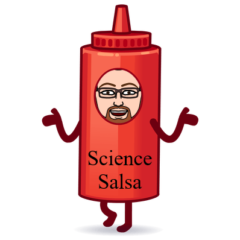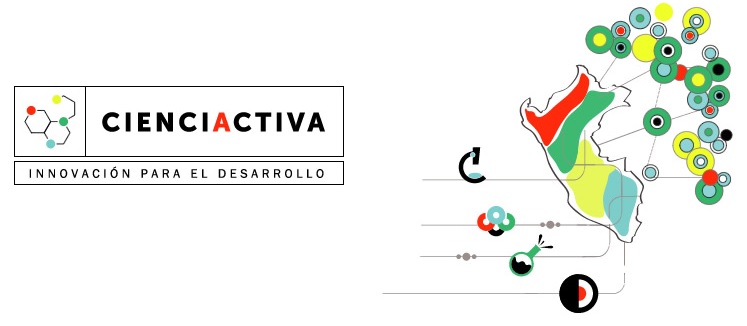A view of what is coming in technology this year ( Para Español siga este enlace)
I am not a futurist, because I can’t predict the future. But there are three technologies that had significant breakthroughs last year and I think they are poised for huge growth this year.
These are the three technologies I believe you should to watch in 2016:
- AI: There was a time when artificial intelligence was seen as the field that would revolutionize our lives. That was several decades ago, and when the promises were not kept, we began thinking that artificial intelligence was limited to university research and to philosophers’ discussions. Now applications of AI are starting to come out of the oven like hot bread and “deep learning” is again a word that makes the inhabitants of Nerdland all rosy-cheeked. If you do not believe me, ask aloud: “OK Google What is deep learning?”. Check your smartphone’s answer. The quality and quantity of information we have now in digital format, accessible in real time over the Internet, and the processing power of computers means that machines can learn much more than we once thought was possible. So much so, that in the United States in 2016 thousands of cars will be learning to drive themselves on the streets full of people.
- Genetics: CRISPR is a more accurate, efficient, and cheaper genetic tool than its predecessors. This has allowed many projects to move from preliminary ideas without real feasibility to projects in full swing with spectacular results this year. No wonder Science Magazine declared CRISPR the scientific breakthrough of 2015. An example of last year’s spectacular results is a mosquito genetically modified to stop malaria transmission, a trait inherited by all descendants. In 2016 with the implementation of CRISPR in more laboratories we will see a greater increase in our knowledge of the mechanisms controlling the genetic material, and an explosion in genetic modifications and temporary manipulations at the level of laboratory animals. Although this year will not bring cures for human genetic diseases, multiple applications using CRISPR would enter the world around us.
- Reusable rockets: The potential to reduce the costs of putting equipment into orbit by reusing rockets makes space increasingly accessible to private companies and local satellite applications. According to some estimates you can lower the cost of a rocket launch to less than a tenth of the average cost of disposable rockets, opening the space frontier for many more ideas out of this world in 2016. Expect to hear more about private weather prediction services, asteroid mining, or exploration ships with solar sails. All these ideas will be increasingly feasible with the launch’s cost reduction coming this year.
Other technologies that are gaining momentum for 2016:
Electric Power: More efficient and cheaper technologies to produce and store energy are coming to market, and with them, the cost of technologies such as electric cars become more affordable. In more areas of the developed world using “green” energy will become standard, and cheaper solar panels and batteries will allow replacing gasoline generators in isolated parts of the developing world.
Flexible electronics: this year may see the first commercial wireless sensors that can stick to your skin like a sticker and measure your heart rate throughout the day, or give you a daily measure of sugar in our blood.
In our corner of the world:
Gravitational waves: A few kilometers from Tri-Cities, in Hanford WA, we have a scientific facility with impressive features. Two concrete-covered tunnels, four kilometers long, guard equally-long steal pipes holding a vacuum than is emptier than outer space. These pipes hold inside precious mirrors and super-cushioned lenses designed to measure really small changes of length with the help of a powerful laser. This gigantic measuring device is the heart of LIGO Hanford, one of two similar facilities designed to measure small space distortions due to large perturbations of the gravitational field in our universe. This year LIGO will be scrutinizing the universe to measure “gravitational waves”, one of the predictions of Einstein’s work that we have not yet observed. The results can come at any time, and with this technology we will begin to see the space in a way that we can only imagine before.
Those are my predictions for 2016. Tell me what are yours?
Las tecnologías del 2015 que se tomarán el 2016
De futurista no tengo nada, porque no puedo predecir el futuro, pero hay algunas tecnologías que comenzaron a crecer bastante el año pasado y este año van a crecer de manera descomunal. Estas son las tres a seguir en el 2016.
- Inteligencia artificial: Hubo un tiempo cuando la inteligencia artificial se veía como un campo que iba a revolucionar nuestra vida. Eso fue hace varias décadas, y cuando la promesa no se cumplió, pensamos que la inteligencia artificial era un campo que se iba a limitar sólo a estudios en las universidades y discusiones de filósofos. Ahora las aplicaciones están comenzando a salir como pan caliente y el “aprendizaje profundo” es de nuevo una palabrita que hace poner sonrosados a los habitantes de nerdlandia. Si no me cree pregúntele en voz alta a su teléfono inteligente: ” OK Google ¿Qué es aprendizaje profundo?”. La calidad y cantidad de información que tenemos ahora en formato digital, accesible en tiempo real en la internet, y la capacidad de procesamiento de las computadoras hace que las máquinas puedan aprender mucho más de lo que antes pensábamos que era posible. Tanto es así, que en los Estados Unidos en el 2016 miles de autos estarán aprendiendo a manejar en las calles de sus ciudades. Para leer más sobre “aprendizaje profundo”, le recomiendo “El hombre que enseña a las máquinas a entender el lenguaje”.
- Genética: CRISPR es una técnica para cortar y pegar genes más precisa, eficiente, y barata que las anteriores. Esto a permitido que muchos proyectos pasaran de estudios en preliminares en desarrollo, a proyectos en plena marcha y con resultados espectaculares este año. Esto llevó a la revista Science a declarar CRISPR el adelanto científico del año en el 2015. Un ejemplo de los resultados del año pasado es la modificación de un mosquito que no transmite la malaria y que heredará esta resistencia a toda su descendencia. En el 2016 con la implementación de esta técnica en más laboratorios veremos un incremento mucho mayor en nuestro conocimiento de la información contenida en el material genético, y una explosión en las modificaciones genéticas a nivel de animales de laboratorio. Aunque este año no nos traerá la curación de enfermedades genéticas en humanos, múltiples aplicaciones que usan CRISPR comenzarán a verse en el mundo que nos rodea.
- Cohetes reusables: El potencial de reducir los costos de poner equipos en órbita reusando los cohetes hace que lanzar satélites para aplicaciones locales sea cada vez más accesibles para compañías privadas. En realidad puede bajar los costos de un lanzamiento de un cohete a menos de una décima parte de lo que cuestan en este momento, abriendo la frontera espacial para muchas más ideas fuera de este mundo en el 2016. Desde compañías de predicción de clima privadas, mineras de asteroides, o naves de exploración con velas solares, todas esas ideas tendrán cada vez más posibilidad de convertirse en realidad con la disminución de costos de lanzamiento que viene este año.
Otras cosas que estarán dando que hablar este año:
Energía Eléctrica: Tecnologías para producir y almacenar energía cada vez más eficientes y baratas están llegando al mercado, y con ellas el costo de tecnologías como los carros eléctricos se vuelven más accesibles. En algunos espacios del mundo desarrollado el uso de energía “verde” será cada vez más común, y el abaratamiento paneles solares y baterías permitirá que algunos lugares aislados del mundo en desarrollo se reemplacen más generadores a gasolina por métodos alternativos.
Electrónicos flexibles: puede que este año veamos los primeros sensores que podemos pegar a nuestra piel como una calcomanía y que pueden medir nuestro ritmo cardíaco durante todo el día, o darnos una medida del azúcar en nuestra sangre a diario.
En nuestra esquina del mundo:
Ondas gravitacionales: A unos cuantos kilómetros de los Tri-Cities, en Hanford, tenemos un laboratorio con características impresionantes. Dos tubos de cuatro kilómetros de largo, y con un vacío mayor que el que se encuentra en el espacio, cargan un preciado interior de espejos y lentes súper-amortiguados. Es parte del sistema de LIGO, un experimento que quiere medir la pequeña distorsión del espacio debido a grandes perturbaciones del campo gravitacional en nuestro universo. Este año estará escudriñando el universo para medir estas “ondas gravitacionales”, una de las predicciones del trabajo de Einstein que aún no ha sido comprobada. Los resultados pueden venir en cualquier momento, y con esta tecnología comenzaremos a ver el espacio de una manera que no habíamos podido hacerlo sino en nuestra imaginación.
Esas son mis predicciones para el 2016. Dime ¿Cúales son las tuyas?
























